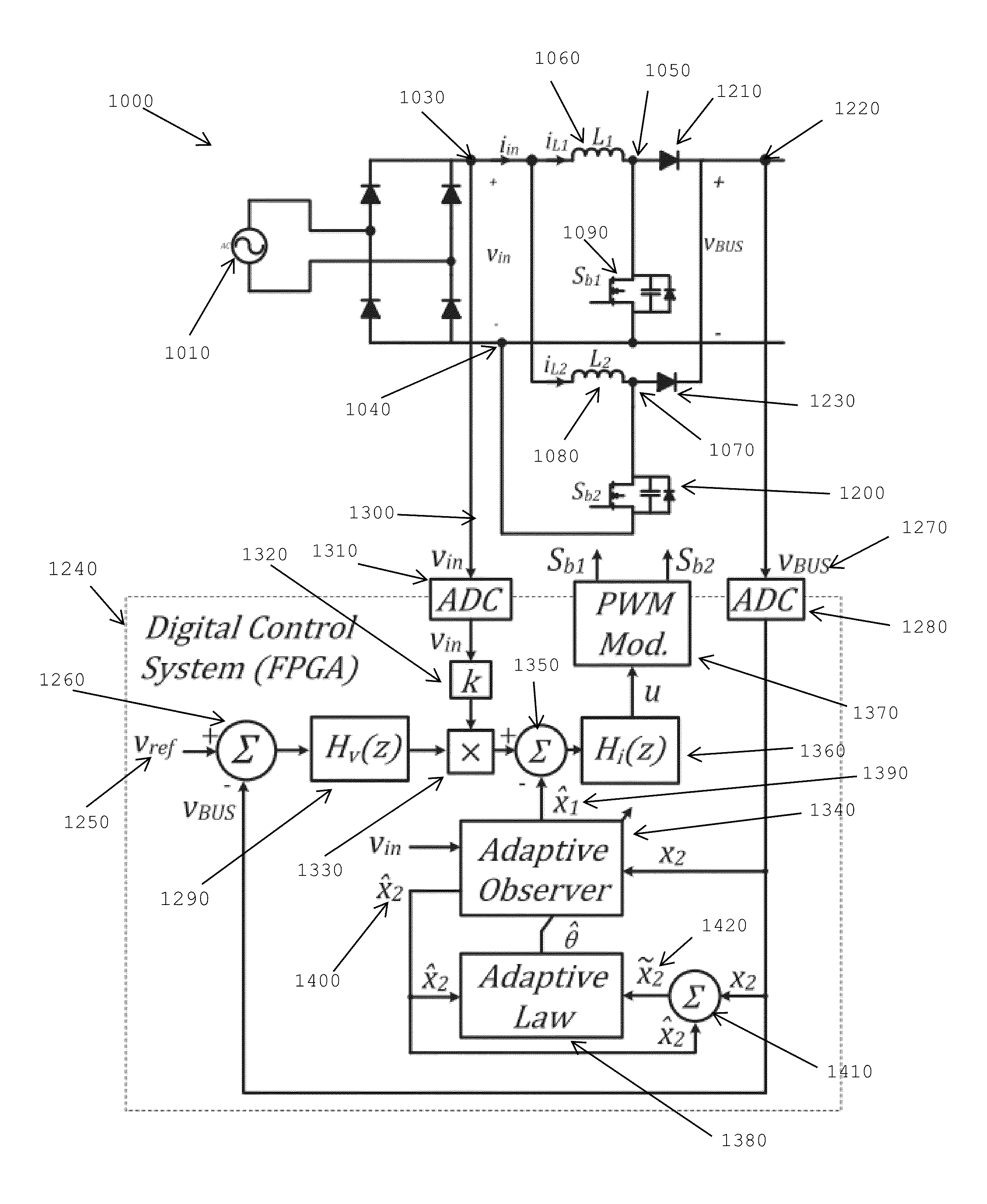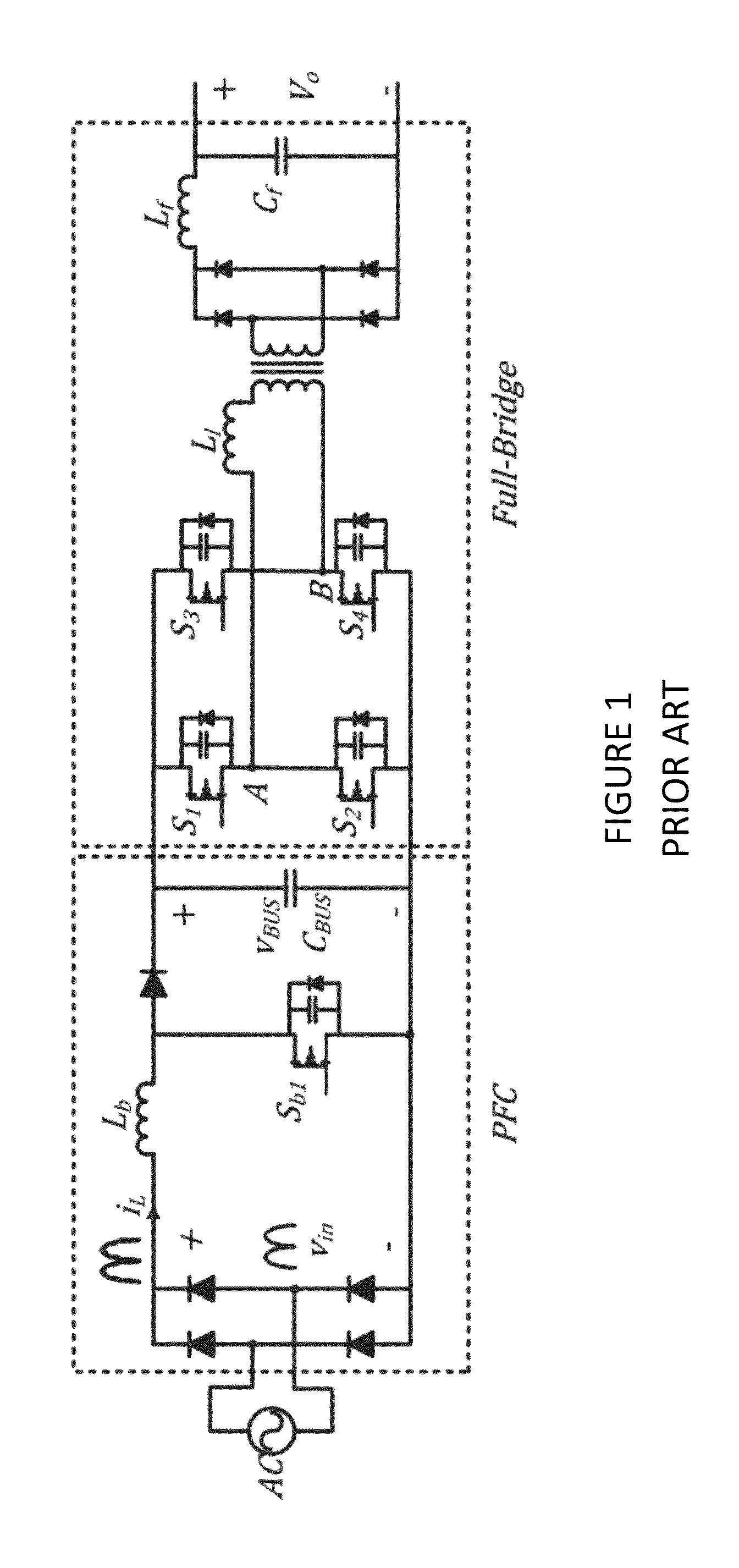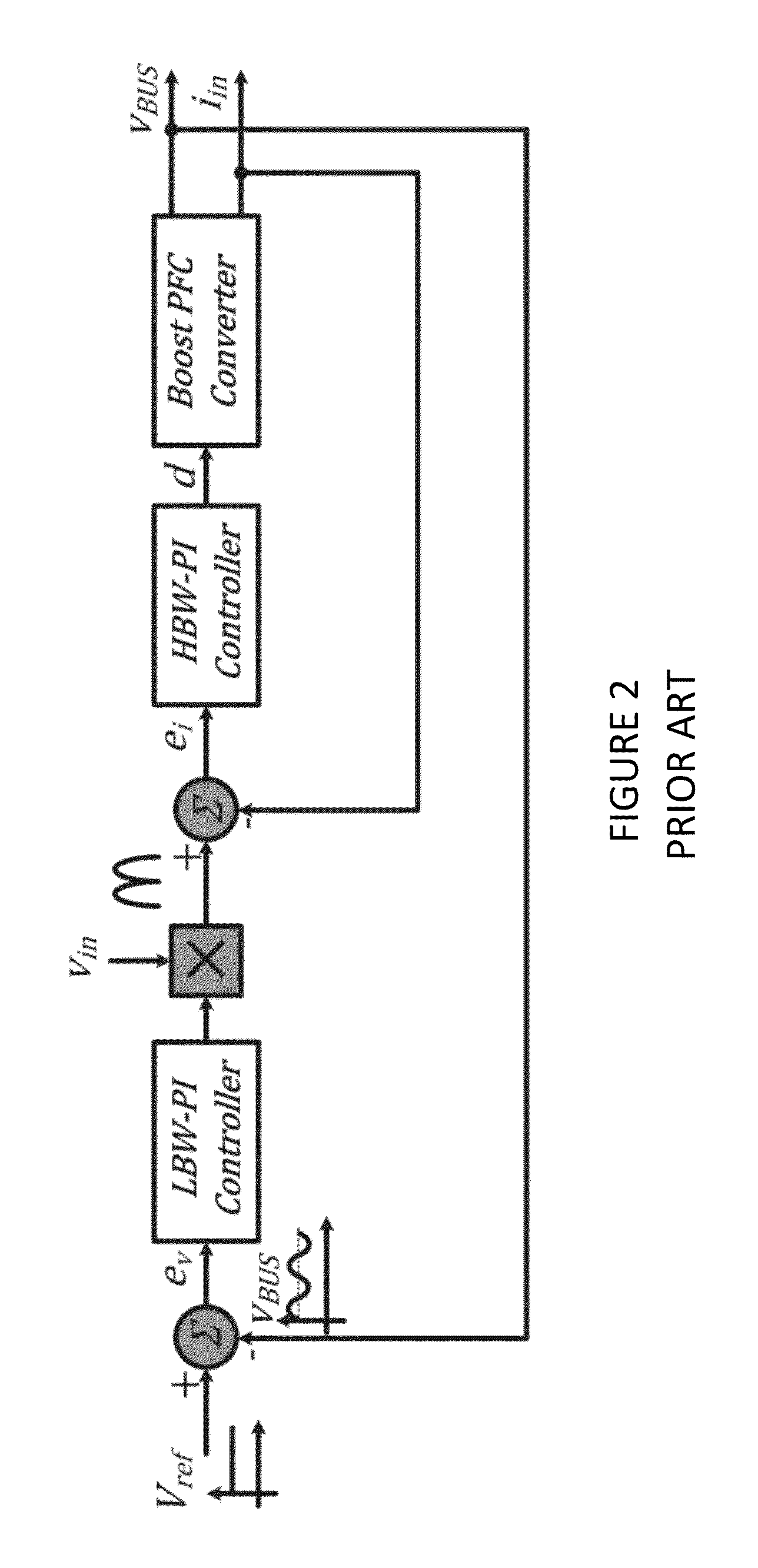Adaptive nonlinear current observer for boost PFC AC/DC converters
a nonlinear current observer and converter technology, applied in the field of power converters, can solve the problems of increasing the complexity of the implementation of the control system, affecting the performance affecting the accuracy of hall effect sensors,
- Summary
- Abstract
- Description
- Claims
- Application Information
AI Technical Summary
Problems solved by technology
Method used
Image
Examples
Embodiment Construction
[0103]This description is organized as follows: A mathematical modelling of the AC / DC converter is presented in Section I. In Section II, an adaptive nonlinear current observer according to one aspect of the invention is explained. The stability of this nonlinear observer for boost PFC converters is then discussed in Section III. In Section IV, a qualitative analysis of the closed-loop control system from geometric point of view is presented. In Section V, the performance of the sensorless control system is verified through simulation. Experimental results from an industrial prototype of the control system are then given in section VI. It should be noted that the section headings are only provided for the reader's convenience and are not meant to form part of the disclosure.
[0104]As will be shown below, it can be mathematically proven that the boost PFC converter is not observable at zero crossings of the input voltage. Because of this, the observer can not provide proper informatio...
PUM
 Login to View More
Login to View More Abstract
Description
Claims
Application Information
 Login to View More
Login to View More - R&D
- Intellectual Property
- Life Sciences
- Materials
- Tech Scout
- Unparalleled Data Quality
- Higher Quality Content
- 60% Fewer Hallucinations
Browse by: Latest US Patents, China's latest patents, Technical Efficacy Thesaurus, Application Domain, Technology Topic, Popular Technical Reports.
© 2025 PatSnap. All rights reserved.Legal|Privacy policy|Modern Slavery Act Transparency Statement|Sitemap|About US| Contact US: help@patsnap.com



